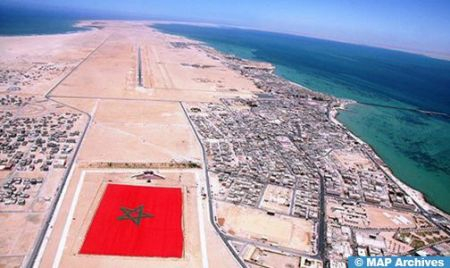“The White Paper on the Moroccan Sahara”, New IRES Publication
The Royal Institute for Strategic Studies (IRES) has published on its website “The White Paper on the Moroccan Sahara”, produced in Arabic, French, English and Spanish. This book, which is a follow-up to a multilingual glossary on the issue, outlines the roots of the artificial rift over Morocco’s Sahara, reviews the foundations of Moroccan sovereignty over the territory, examines the present situation of populations in the area, and highlights progress made on development as a result of Morocco’s sustained efforts under the enlightened leadership of His Majesty King Mohammed VI, states an IRES press release. The publication includes four parts. The first, entitled “The colonial dismantling of the Cherifian Empire in the 19th and 20th centuries”, explains how the Cherifian Empire had internationally recognized borders at the time of its colonization, how Saharan tribes have always been Moroccan, and how Morocco has consistently complied with international legality with regard to the Sahara issue, explains the same source. Building on the Royal Vision, the book’s second part highlights the current situation in the Moroccan Sahara, focusing on the primacy of decentralized development, the development momentum instilled by Morocco’s state, and national and regional strategies putting people first, adds the press release. The third part looks at the situation in the camps of Tindouf, a lawless territory on Algerian territory. It discusses divisions within Polisario, which acts as a destabilizing force in the Sahel region. When it comes to the the final chapter of the White Paper, it explains how Algeria, a party to the Sahara conflict, has instrumentalized the conflict, persistently fomenting it to the detriment of economic development in the Maghreb, and systematically, since the Kingdom’s independence, rebuffed Morocco’s outstretched hand, explains the same source. The White Paper includes a chronology and a list of over 130, mostly foreign, bibliographical references, the Institute notes, adding that the Amazigh version of this work is currently being produced.

